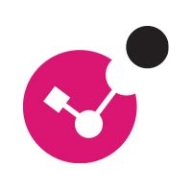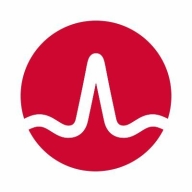

Symantec Endpoint Security and Check Point Harmony Endpoint compete in the endpoint protection category. Based on feature comparisons, Check Point Harmony Endpoint seems to have the upper hand due to its broad functionality and ease of integration.
Features: Symantec offers excellent antivirus, anti-spyware, firewall, intrusion prevention, and application and device control features. Check Point Harmony Endpoint provides endpoint detection, prevention response (EDPR) with Anti-Malware, Anti-Ransomware, and Threat Emulation modules.
Room for Improvement: Symantec struggles with high resource consumption, a confusing management console, and complexity in reporting. Check Point can be heavy on system resources and has complex initial setup with issues in third-party application integration.
Ease of Deployment and Customer Service: Symantec is primarily deployed on-premises with mixed feedback on technical support post-Broadcom acquisition. Check Point Harmony offers flexible deployment options and generally receives positive feedback on customer service, reaching an edge over Symantec.
Pricing and ROI: Symantec is competitively priced, though criticized for being costlier than peers like Trend Micro or Sophos, but provides a good return on investment. Check Point offers customizable licensing options and justifies its pricing with a comprehensive feature set, often seen as offering better long-term value.
Initially, we spent two to three days on the investigation process, but now we are able to investigate alerts in only half a day, which has really boosted our performance and shown a return on investment.
Now, the system automatically detects and isolates endpoints within minutes.
The product is affordable and provides excellent coverage and protection across multiple platforms.
Symantec Endpoint Security filled gaps in our toolset, particularly with the ability to control network firewall on hosts remotely, which was greatly appreciated.
The customer support for Check Point Harmony Endpoint deserves a rating of 10.
We use premium support, and it is beneficial as 24/7 support is available.
I have opened several cases and they were handled very efficiently and quickly.
In some cases, it rates as high as ten out of ten, while in others, it can be as low as eight.
There is no support in the German language, which is a problem for many public tenders.
We initially purchased only 100 licenses and as we grew, we acquired many more licenses without encountering any issues.
The single agent works for multiple operating systems and endpoint types, providing elastic growth and reducing the overall number of components.
Proactive features help guard against data breaches and vulnerabilities.
Symantec Endpoint Security is quite scalable, and it is very important for large clients.
The scalability of the servers is good, as it requires computational powers.
Check Point Harmony Endpoint is very stable in our experience, with few crashes or disruptions in daily use.
The stability of the tool is high, as I have not experienced any downtime.
Occasionally, there are some backend issues where the tenant is down, but apart from that, Check Point Harmony Endpoint is stable and working effectively.
I have encountered issues where I had to uninstall and reinstall the product on end users' computers to view the logs again.
Previously, we used to have multiple servers such as GUP servers and numerous servers for pushing updates, but we reduced it and transitioned almost 30,000 devices to CrowdStrike, which was easy to manage.
Principally regarding the system performance, Check Point Harmony Endpoint impacts us significantly, and addressing this issue would make a substantial difference.
Extending that window would help security teams conduct deeper forensic investigations and meet compliance requirements more easily.
Building a threat simulation tool and adding native capabilities to simulate phishing, malware, or ransomware scenarios will help teams validate protection and train users without relying on third-party tools.
Device management is not very good and I am not enabling it in my organization due to security reasons.
I would like to see improvements in the scanning part of the solution, specifically to enhance the CPU and hard disk usage during scanning and updates to prevent disruption during work hours.
It is cumbersome to use, particularly in handling firewall management.
It is not expensive and provides comprehensive coverage.
While the prices are higher than those of other solutions, the features justify the investment for customers.
Pricing is a bit expensive but justified by the product’s features, capabilities, and scalability.
It seems to be half the cost or more affordable than other solutions.
The pricing is very low compared to other companies like SentinelOne and others.
I rate the pricing, setup cost, and licensing around nine out of ten.
Check Point Harmony Endpoint protects our company by warning us against clicking any malicious links and prevents our hosts from becoming vulnerable to cyber attacks.
This feature is valuable for our customer because it stops threats before they reach users by scanning incoming files at the network gateway.
The anti-ransomware and threat emulation features have significantly helped our organization as they prevent attackers from encrypting files during ransomware attacks, allowing the system to re-decrypt files and restore them to their original forms, effectively stopping ransomware attacks.
Symantec Endpoint Security offers great features such as reporting capabilities with a customized dashboard that pulls in EDR timelines, threat maps, and compliance metrics into one view.
Symantec Endpoint Security offers many valuable features, such as file explosion, application learning, DLP, injection detection, and EDR solutions for traffic control.
The incident response capabilities allow me to resolve authentication and support issues promptly, ensuring the system operates without downtime.
| Product | Market Share (%) |
|---|---|
| Check Point Harmony Endpoint | 2.3% |
| Symantec Endpoint Security | 3.4% |
| Other | 94.3% |

| Company Size | Count |
|---|---|
| Small Business | 133 |
| Midsize Enterprise | 69 |
| Large Enterprise | 76 |
| Company Size | Count |
|---|---|
| Small Business | 69 |
| Midsize Enterprise | 32 |
| Large Enterprise | 63 |
Check Point Harmony Endpoint provides advanced threat prevention with centralized management and seamless integration, safeguarding networks through robust security features and real-time threat detection. It excels at ransomware prevention, encryption protection, and detailed threat analysis.
Check Point Harmony Endpoint is renowned for its comprehensive security features, including anti-ransomware capabilities and centralized management. It integrates seamlessly with existing systems, enhancing network protection through features like SandBlast Agent and threat emulation. Organizations benefit from significant incident reductions, utilizing its powerful threat detection, forensics, VPN capabilities, and robust encryption measures. Centralized management during remote work setups and enhanced security through URL filtering and rollback mechanisms further solidify its efficiency. Despite its high resource consumption and configuration challenges, it remains a preferred choice among enterprises aiming to enhance cybersecurity measures.
What Key Features Does Check Point Harmony Endpoint Offer?In sectors such as finance and healthcare, Check Point Harmony Endpoint is crucial for maintaining data security and regulatory compliance. Its features cater to endpoint protection requirements across industries, providing reliable solutions for encryption and cybersecurity challenges. The tool's deployment across diverse environments secures endpoint systems effectively, ensuring uninterrupted operations amid evolving threats.
Symantec Endpoint Security is a robust and reliable product that provides complete protection against viruses, malware, Trojans, and malicious files. It offers application and device control, ease of use in deploying and updating, a central control console, stability, scalability, auto-discovery capabilities, patch management, endpoint detection and response capabilities, intrusion detection module.
The Symantec Global Intelligence Network (GIN) provides threat intelligence and detection across endpoints, email, and web traffic. It has helped organizations reduce downtime, increase productivity, and improve security posture. Symantec Endpoint Security is easy to use, has a flexible administration, and offers more value than expected.
We monitor all Endpoint Protection Platform (EPP) reviews to prevent fraudulent reviews and keep review quality high. We do not post reviews by company employees or direct competitors. We validate each review for authenticity via cross-reference with LinkedIn, and personal follow-up with the reviewer when necessary.